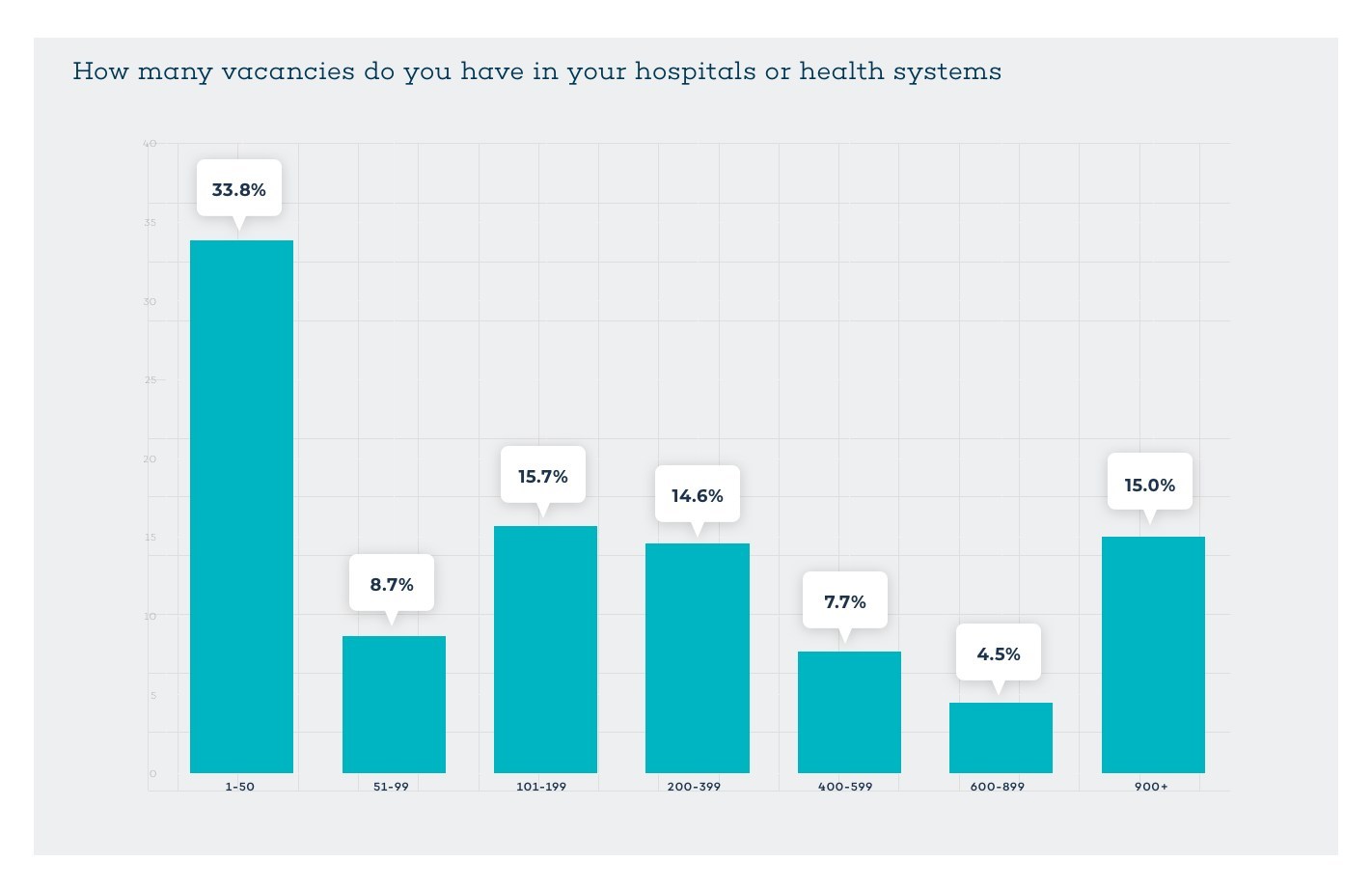
Healthcare staffing shortages were a serious concern nationwide well before Covid-19. But the pandemic and the “Great Resignation” have further exacerbated the issue and put pressure on health systems to hire more workers. Now a new survey commissioned by AKASA, which develops AI for healthcare providers, finds that over half of health systems and hospitals—about 57%—report having more than 100 job vacancies.
The findings were released Wednesday by the South San Francisco-based company. The survey fielded responses from 411 chief financial officers and revenue cycle leaders at hospitals and health systems across the U.S. It was conducted through the Healthcare Financial Management Association’s Pulse Survey program between December 1 and December 21, 2021.
Healthcare organizations’ staffing challenges go beyond employees leaving and difficulty filling vacancies. In addition to high turnover, wages have also steadily increased, said Amy Raymond, vice president of revenue cycle operations at AKASA, in an email.
“This combination has led to increased costs and lost productivity every time an organization has a team member resign,” Raymond said. “We want to dig into the current state of how healthcare organizations are faring amid this massive workforce disruption, especially in terms of it’s impacting healthcare’s back office.”

Source: AKASA
In addition to clinical staff shortages, administrative vacancies are also plaguing health organizations, according to AKASA. About one-quarter, or 26%, of those surveyed said their hospital or health system needed to hire more than 20 people to adequately staff their revenue cycle department.

A Deep-dive Into Specialty Pharma
A specialty drug is a class of prescription medications used to treat complex, chronic or rare medical conditions. Although this classification was originally intended to define the treatment of rare, also termed “orphan” diseases, affecting fewer than 200,000 people in the US, more recently, specialty drugs have emerged as the cornerstone of treatment for chronic and complex diseases such as cancer, autoimmune conditions, diabetes, hepatitis C, and HIV/AIDS.
To maintain sufficient staffing levels, hospitals have been offering higher pay and bonuses and dangling additional benefits, while paying staff more to work overtime and extra shifts, according to an Office of Inspector General report.
“Beyond burnout, this is putting added financial strain on healthcare systems, as overtime and contractor pay is often higher than standard pay and further taxes the already-depleted resources of many revenue cycle departments,” Raymond said. “Added financial strain makes it more difficult to hire the additional people who are needed, which furthers the workload of the current team—creating a vicious cycle.”
Raymond added that for all the new problems the pandemic has introduced, it has also shone a light on decades-old issues: Healthcare operations teams have historically been understaffed.
To fill healthcare vacancies, competition is heating up, and not only between one hospital and another in the same region. As remote work increases and becomes the norm—especially for administrative positions—healthcare organizations are now competing with providers across the country for the same talent, Raymond said. Given larger health systems can generally pay more, that’s putting smaller systems and rural hospitals, which often have lower pay scales, at an extreme disadvantage, she said.
To address staffing shortages, healthcare leaders are employing a range of strategies that go beyond pay, too. They’re looking at everything from improving workplace conditions to using AI to do more with fewer employees.
“To tackle these challenges, leaders should continue to evolve strategies that boost morale and recruitment efforts, and examine opportunities to leverage AI and automation to alleviate the burden on their teams,” Raymond said.
Photo: Maridav, Getty Images














